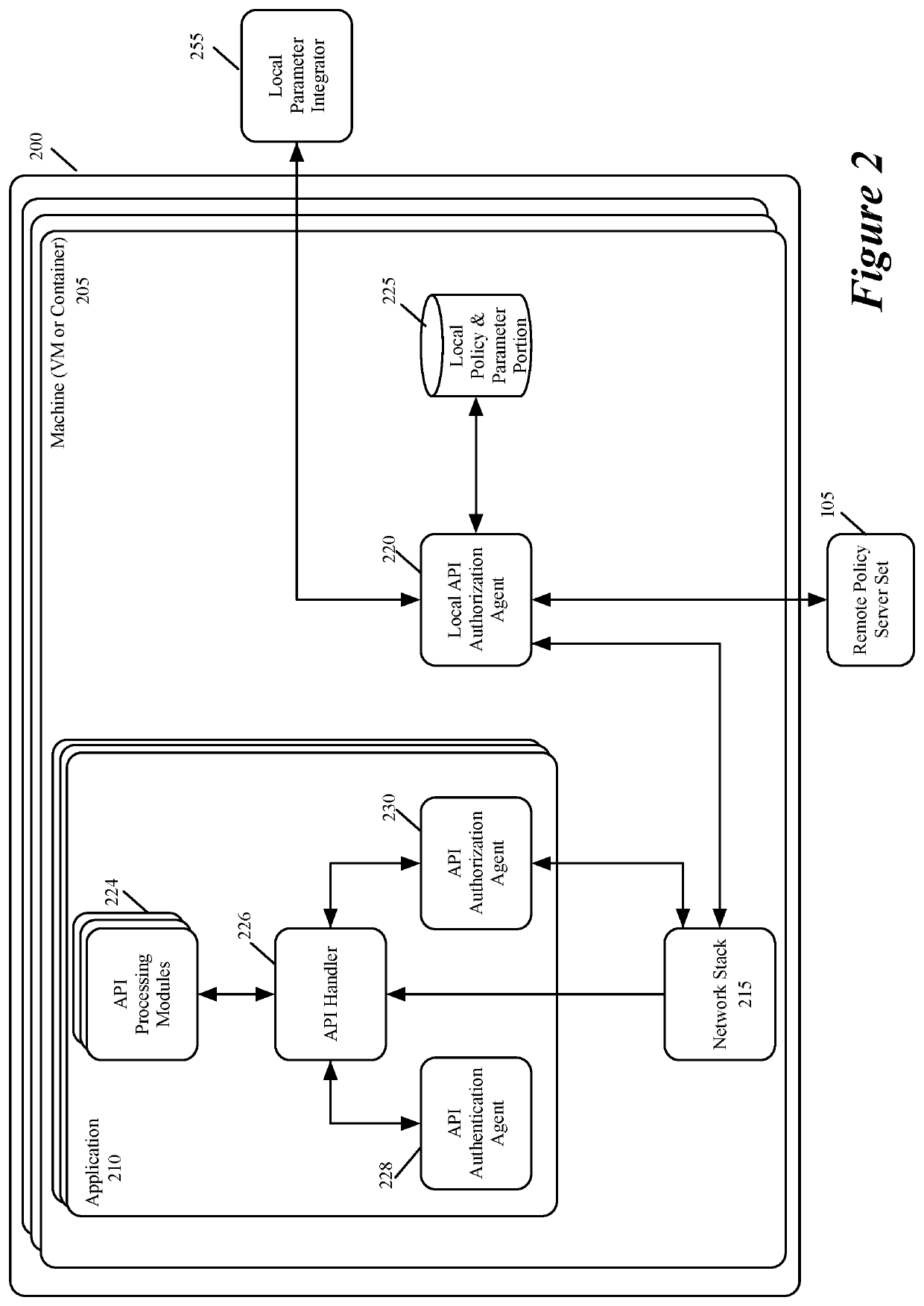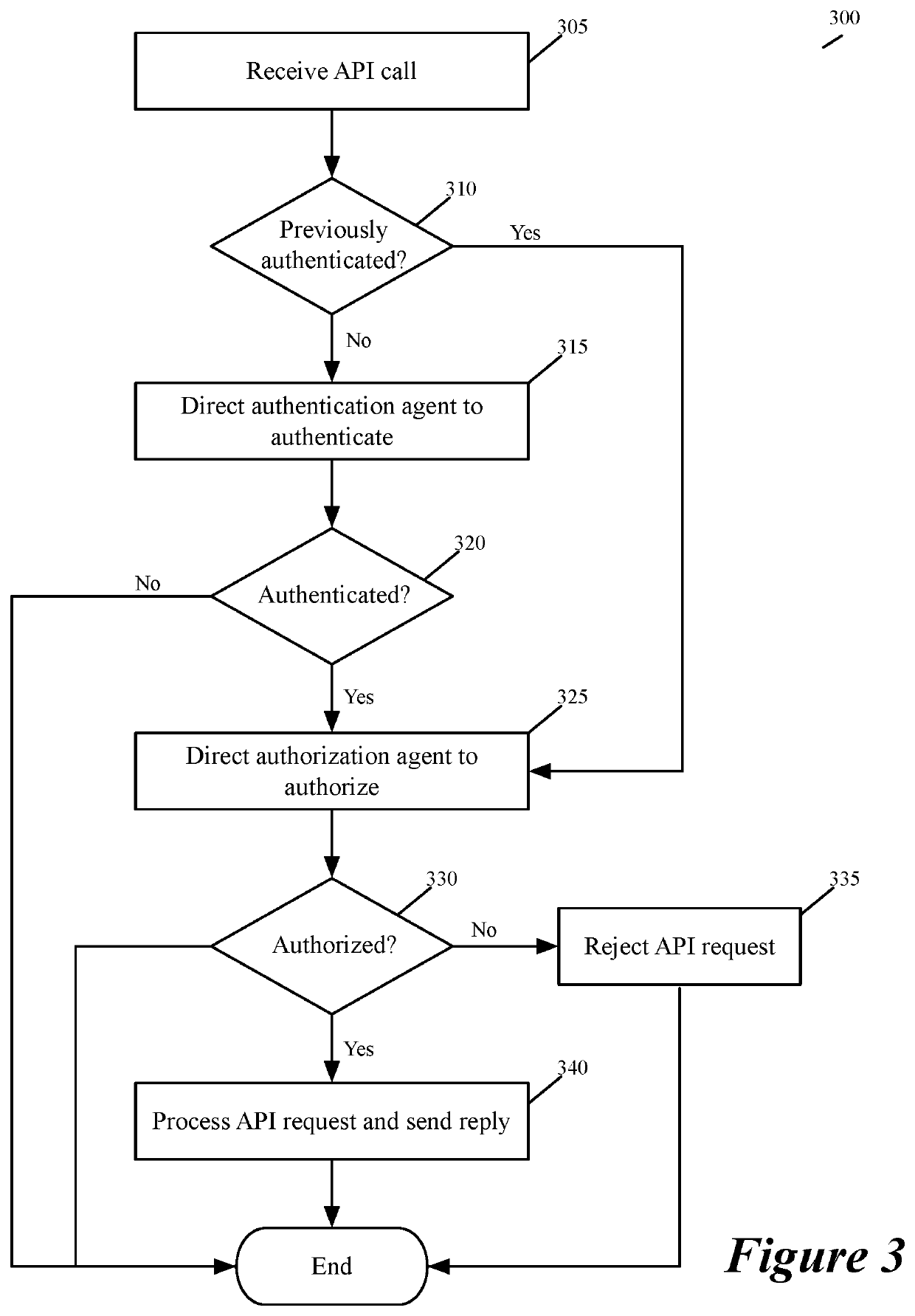Partial policy evaluation
a policy evaluation and policy technology, applied in the field of partial policy evaluation, can solve the problems of difficult statically to modify these controls, difficult to dynamically modify them while the application is running, and especially acute problems
- Summary
- Abstract
- Description
- Claims
- Application Information
AI Technical Summary
Benefits of technology
Problems solved by technology
Method used
Image
Examples
Embodiment Construction
[0020]In the following detailed description of the invention, numerous details, examples, and embodiments of the invention are set forth and described. However, it will be clear and apparent to one skilled in the art that the invention is not limited to the embodiments set forth and that the invention may be practiced without some of the specific details and examples discussed.
[0021]Some embodiments of the invention provide a system for defining, distributing and enforcing policies for authorizing API (Application Programming Interface) calls to applications executing on one or more sets of associated machines (e.g., virtual machines, containers, computers, etc.) in one or more datacenters. This system has a set of one or more servers that acts as a logically centralized resource for defining, storing, and distributing policies and parameters for evaluating these policies.
[0022]The server set in some embodiments receives and stores definitions of several authorization policies for s...
PUM
 Login to View More
Login to View More Abstract
Description
Claims
Application Information
 Login to View More
Login to View More - R&D
- Intellectual Property
- Life Sciences
- Materials
- Tech Scout
- Unparalleled Data Quality
- Higher Quality Content
- 60% Fewer Hallucinations
Browse by: Latest US Patents, China's latest patents, Technical Efficacy Thesaurus, Application Domain, Technology Topic, Popular Technical Reports.
© 2025 PatSnap. All rights reserved.Legal|Privacy policy|Modern Slavery Act Transparency Statement|Sitemap|About US| Contact US: help@patsnap.com



